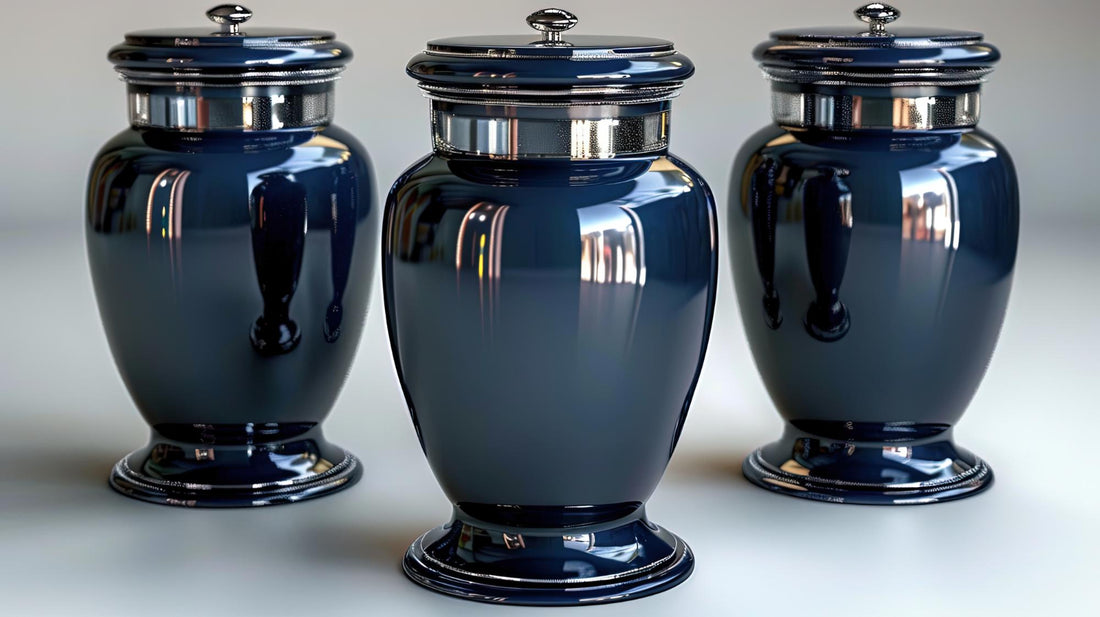Selecting the right cremation urn is an important decision when memorializing a loved one. Among the many considerations, choosing the correct size is essential to ensure it can accommodate the ashes while also fitting your personal or ceremonial needs. In this comprehensive guide, we'll explain the factors you need to consider, provide a breakdown of urn sizes, and help you make an informed choice for this meaningful purchase.
Why Does Size Matter When Choosing a Cremation Urn?
The size of a cremation urn is important for several reasons:
- Capacity: Each urn is designed to hold a specific volume of ashes, measured in cubic inches. Ensuring the urn has enough space is crucial.
- Purpose: Whether the urn is for burial, display, or keepsakes, the size will depend on its intended use.
- Portioning: In some cases, ashes are divided among family members, requiring multiple smaller urns or keepsake urns.
Understanding the basics of urn sizes can help you find the perfect fit.
How Cremation Urn Sizes Are Measured
Urn sizes are measured in cubic inches. A general rule of thumb is that 1 pound of body weight equals approximately 1 cubic inch of ashes. For example, a person weighing 150 pounds will require an urn with a capacity of at least 150 cubic inches.
Common Urn Sizes and Their Uses
1. Standard Adult Urn:
- Capacity: 180–220 cubic inches
- Suitable For: Storing all the ashes of an adult.
- Uses: Display in the home, burial, or placement in a columbarium niche.
2. Companion Urn:
- Capacity: 350–400 cubic inches
- Suitable For: Holding the ashes of two individuals (often a couple).
- Uses: Display or burial for couples who wish to be memorialized together.
3. Keepsake Urn:
- Capacity: 1–50 cubic inches
- Suitable For: Holding a small portion of ashes.
- Uses: Sharing ashes among family members or keeping a small amount as a personal remembrance.
4. Pet Urn:
- Capacity: 10–100 cubic inches, depending on the size of the pet.
- Suitable For: Memorializing beloved pets of various sizes.
5. Infant or Child Urn:
- Capacity: 30–100 cubic inches
- Suitable For: Memorializing infants or children.
- Uses: Display or burial in a smaller urn.
6. Scattering Urn:
- Capacity: Varies, typically around 200 cubic inches.
- Suitable For: Designed for scattering ashes during a ceremony.
- Uses: Lightweight and easy to use for scattering ashes outdoors.
Factors to Consider When Choosing the Right Size of Cremation Urn
1. Body Weight of the Deceased:
Use the rule of 1 cubic inch per pound to estimate the urn’s capacity.
2. Purpose of the Urn:
- For Display: Choose an urn that complements your home decor and is appropriately sized for the display location.
- For Burial: Check with the cemetery for size restrictions or burial vault requirements.
- For Travel: Ensure the urn complies with airline regulations if you need to transport ashes.
3. Division of Ashes:
If ashes will be shared among family members, consider purchasing multiple keepsake urns or jewelry urns.
4. Aesthetic Preferences:
Choose a design that reflects the personality and interests of the deceased while keeping size requirements in mind.
Materials like wood, metal, or ceramic may slightly affect the urn's internal capacity due to thickness or design.
Tips for Choosing the Right Urn Size
1. Consult the Funeral Director or Crematory:
They can provide an exact measurement of the ashes after cremation to help you select the correct size.
2. Plan Ahead for Companion Urns:
If you're purchasing a companion urn, consider the combined weights of both individuals.
3. Choose a Larger Size When in Doubt:
It’s always better to select an urn that is slightly larger than required to ensure there is adequate space.
If you wish to scatter some ashes or create keepsakes for family members, opt for a smaller urn or keepsake urns alongside the main urn.
Common Questions About Urn Sizes
Q: Can I use any urn for ashes?
A: While any container can technically hold ashes, cremation urns are designed specifically for this purpose. They provide the right capacity, secure sealing, and dignified aesthetics.
Q: What happens if I choose an urn that's too small?
A: If the urn is too small, not all of the ashes will fit. You’ll need to consider dividing the ashes or purchasing a larger urn.
Q: Can I use one urn for multiple people?
A: Yes, companion urns are designed for this purpose. You can also use custom or oversized urns to hold the ashes of more than one individual.
Q: How do I measure ashes for keepsake urns?
A: Keepsake urns typically hold a very small portion of ashes, so you can request a specific amount of ashes from the crematory.
Why Choosing the Right Size Matters
Selecting the correct size of cremation urn ensures that the ashes are securely and respectfully contained, while also allowing you to honor your loved one in the way that feels most meaningful to you. Whether you’re choosing an urn for display, burial, or keepsakes, understanding the size options can make the decision-making process much easier.
Final Thoughts
Choosing the right size cremation urn doesn’t have to be a daunting task. By considering the weight of the deceased, the intended use of the urn, and any additional preferences, you can make a choice that honors your loved one’s memory. Remember, this is a deeply personal decision, and there’s no right or wrong choice as long as it feels meaningful to you.
If you’re still unsure about which urn size to choose, consult with your funeral director or reach out to an urn specialist for guidance. They’ll help you find an option that perfectly suits your needs.

